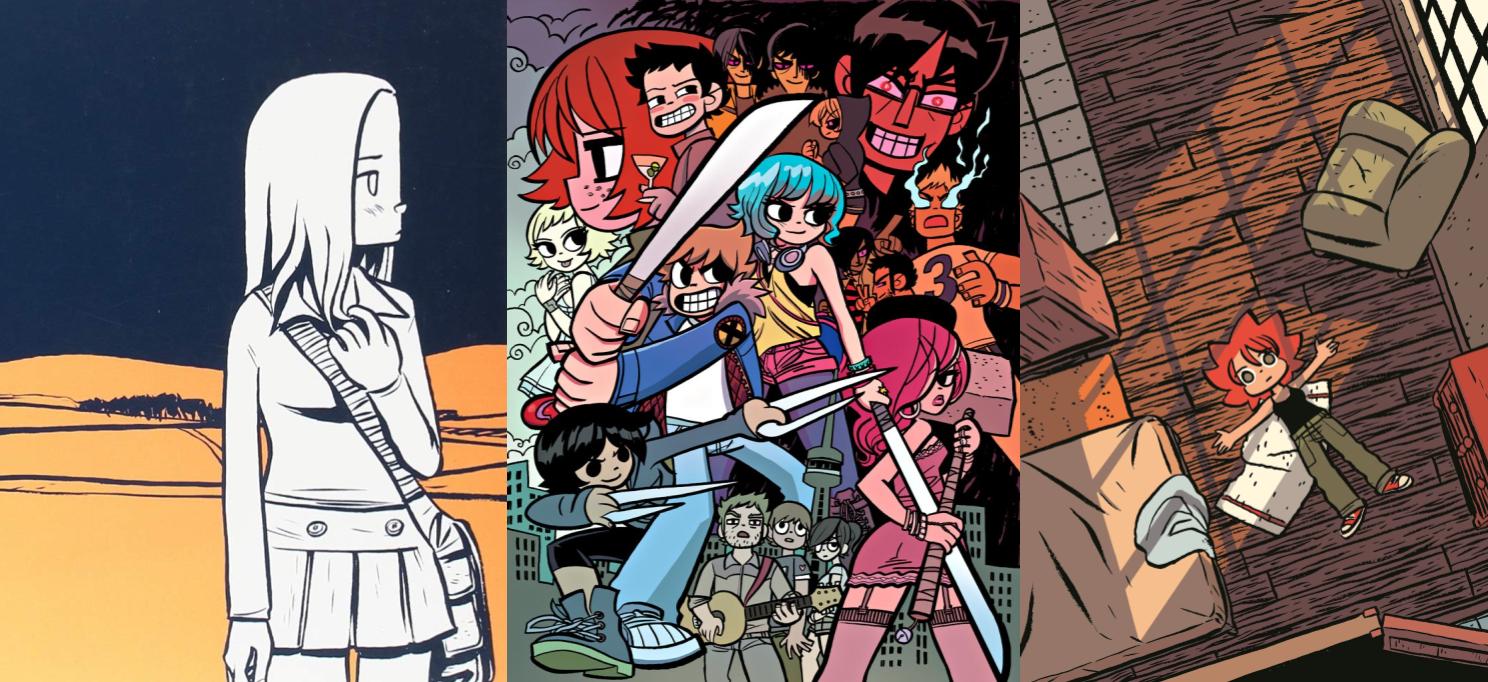Table of Contents Show
Bryan Lee O’Malley is a Canadian cartoonist best known for the Scott Pilgrim series, a run of six smash-hit graphic novels subsequently adapted into a major motion picture and a video game. Many fans might not know, however, that Bryan Lee O’Malley also wrote two one-off graphic novels: Lost at Sea shortly before Scott Pilgrim and Seconds several years after. They’re both recognizably “O’Malley,” down to the cartoony art style and anarchic sensibility.
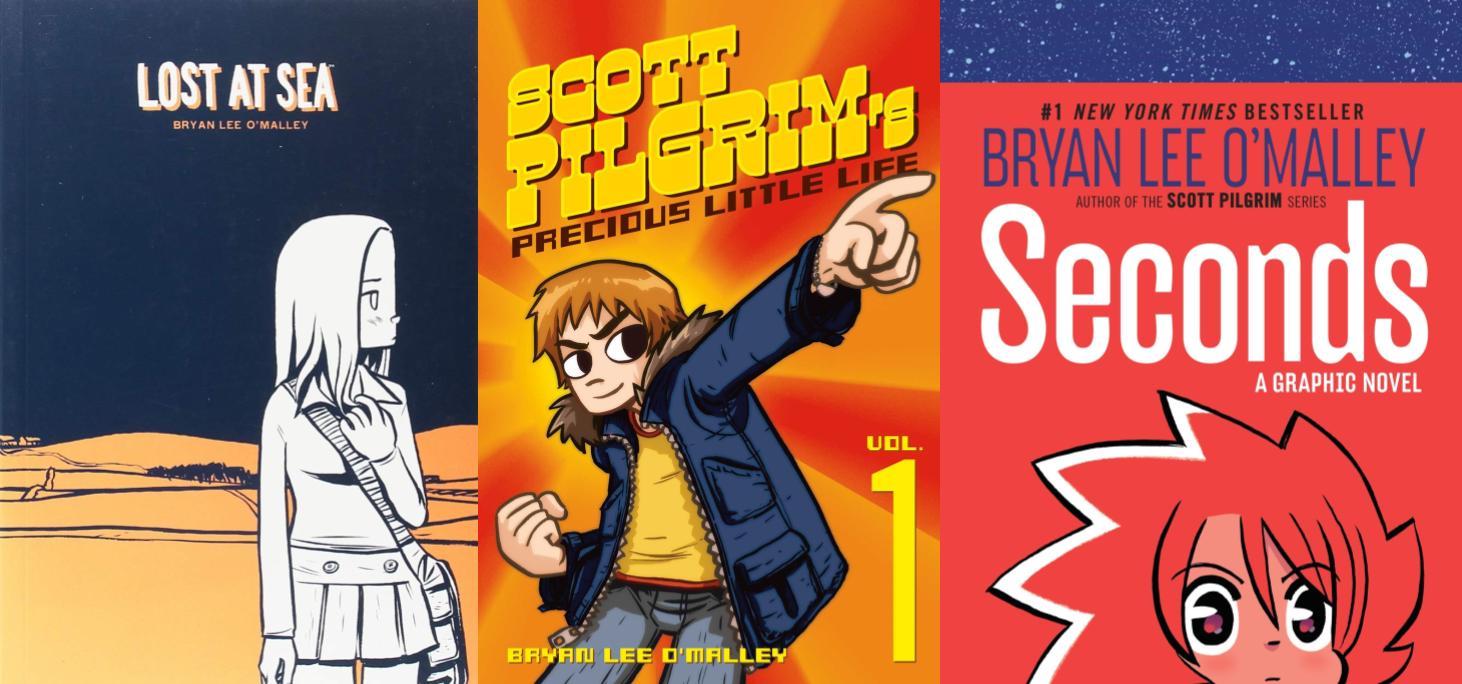
The three stories are tonally and structurally very different, but more connections begin to emerge the closer you look. Lost at Sea, released in 2003, is about an eighteen-year-old high school student on a road trip across the United States. The Scott Pilgrim series, released from 2004 to 2010, is about a twenty-three-year-old slacker making music and looking for love in Toronto. Seconds, released in 2014, is about a twenty-nine-year-old chef trying to start a new restaurant.
That’s right: Bryan Lee O’Malley wrote about older and older characters as his career went on. Each individual story comments on the difficulties of growing up at a different stage of young adulthood, and incorporates a unique take on the supernatural to reinforce its themes. So when they’re viewed in a linear progression, Bryan Lee O’Malley’s graphic novels create a strikingly cohesive a metanarrative that can show us some pretty amazing things about what it means to grow up.
Chasing Cats
Lost at Sea is about Raleigh, an eighteen year-old girl on a road trip from California to Canada with three other high school students she barely knows.
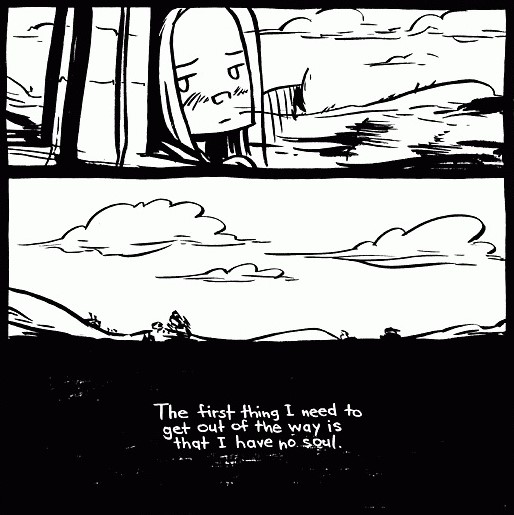
Raleigh is troubled. She’s had difficulty socializing since her best friend moved away in the eighth grade. Her parents divorced not long after, which left her confused about relationships, as well as life in general. In fact, she’s on the road because she’s returning from an extended visit with a boyfriend she met online, and she has no idea what the next steps for them might be, if any.
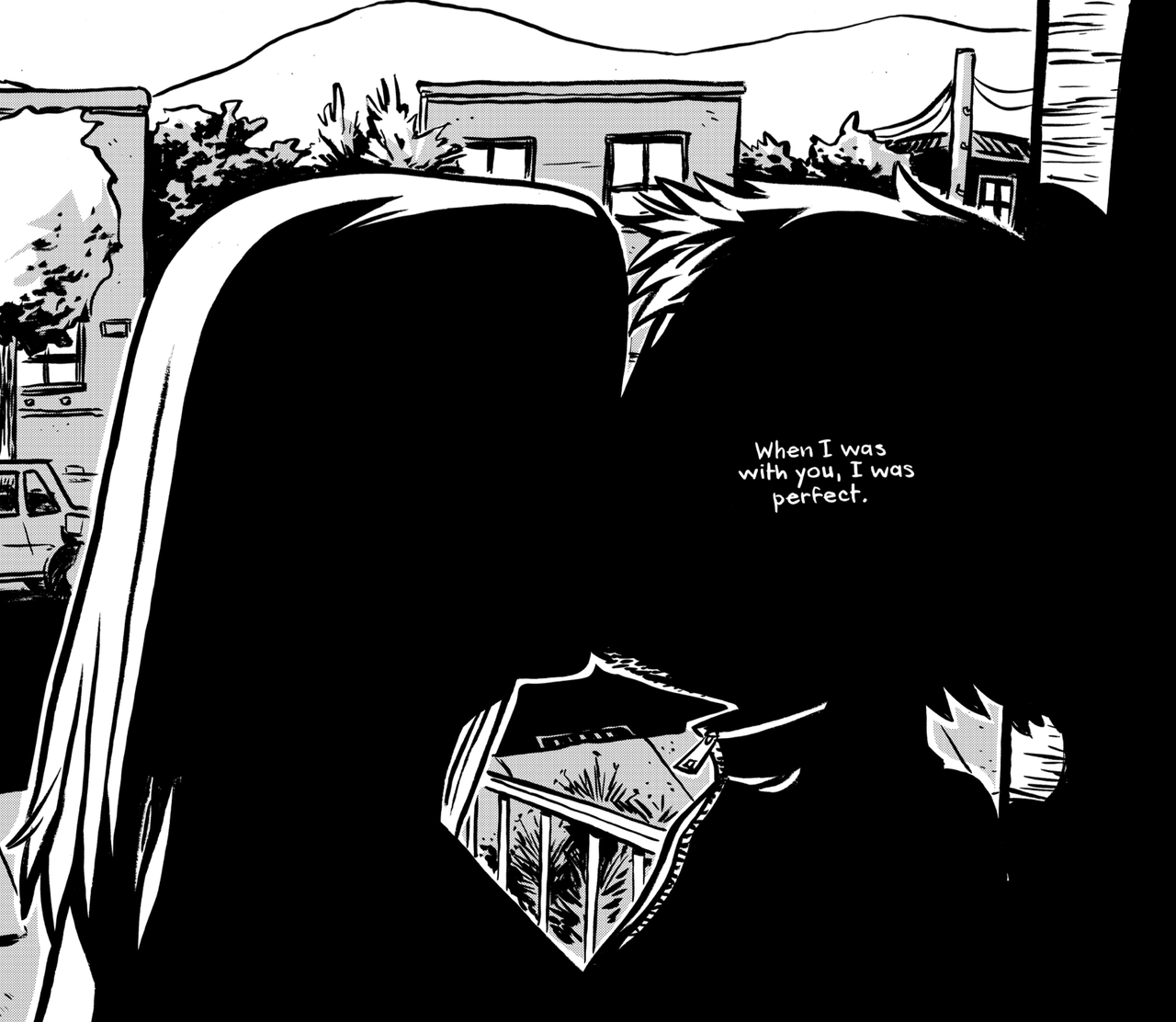
Though she eventually begins to bond with her traveling partners and enjoy the ride, the trip is still awkward and claustrophobic and beset by Raleigh’s intense disorientation and melancholy. Raleigh wants what every coming-of-age protagonist wants: to make a life for herself. She is constantly thwarted, however, by her lacking means as a teenager. She wants a romantic relationship, but the only boy who understands her is hundreds of miles away.
She might want the stability of a career, but she has university first, and she has mixed feelings about her mother’s professional success because it coincided with her parent’s divorce. She wants friends, too, but she hardly even knows these people she’s traveling with… and why does she keep seeing so many cats at rest stops and restaurants?
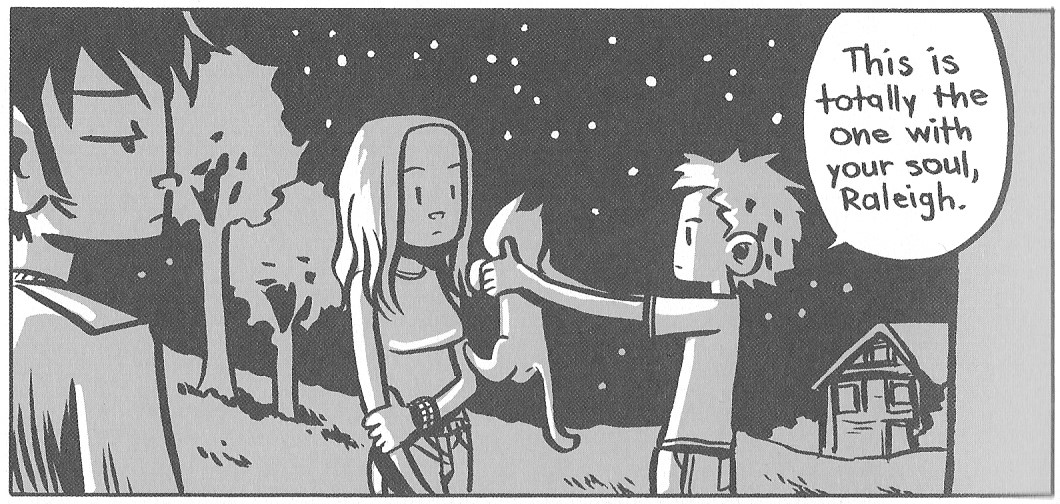
In uncharacteristically subtle fashion, Bryan Lee O’Malley constantly hints that something magical is going on in the background Lost at Sea. At a roadside diner, Raleigh finds a picture of a girl that looks uncannily like a younger version of her. At a sketchy motel, memories begin to resurface, and Raleigh reveals that she’s taken the trip from California before, with her mother, right after the divorce. And she keeps seeing cats!
In a drowsy haze, she concocts a story where her mother exchanged Raleigh’s soul for her career success with a man at the motel bar, who put her soul into a cat and watched it run away. So she wakes her friends and they hunt for cats through the night, capping off the story with an emotionally frenetic but ultimately tender climax. As it turns out, there’s no actual magic in Lost at Sea, which feels appropriate for a story about cynical teenagers.
But Raleigh’s delusion is still instructive. Instead of facing her uncertain future or trying to make the best of a strange situation, she searches for a supernatural solution to the traumas of her past. However, as the night wears on and she realizes that she won’t find her soul in a cat, she comes to see the truth. After tearfully confessing the reason she was in California to one of her traveling partners and finding herself in an awkward embrace, Raleigh narrates:
“Maybe it’s important to open up to people—people who are right there with you, not some thousand miles away in another universe.”
Bryan Lee O’Malley, Lost at Sea
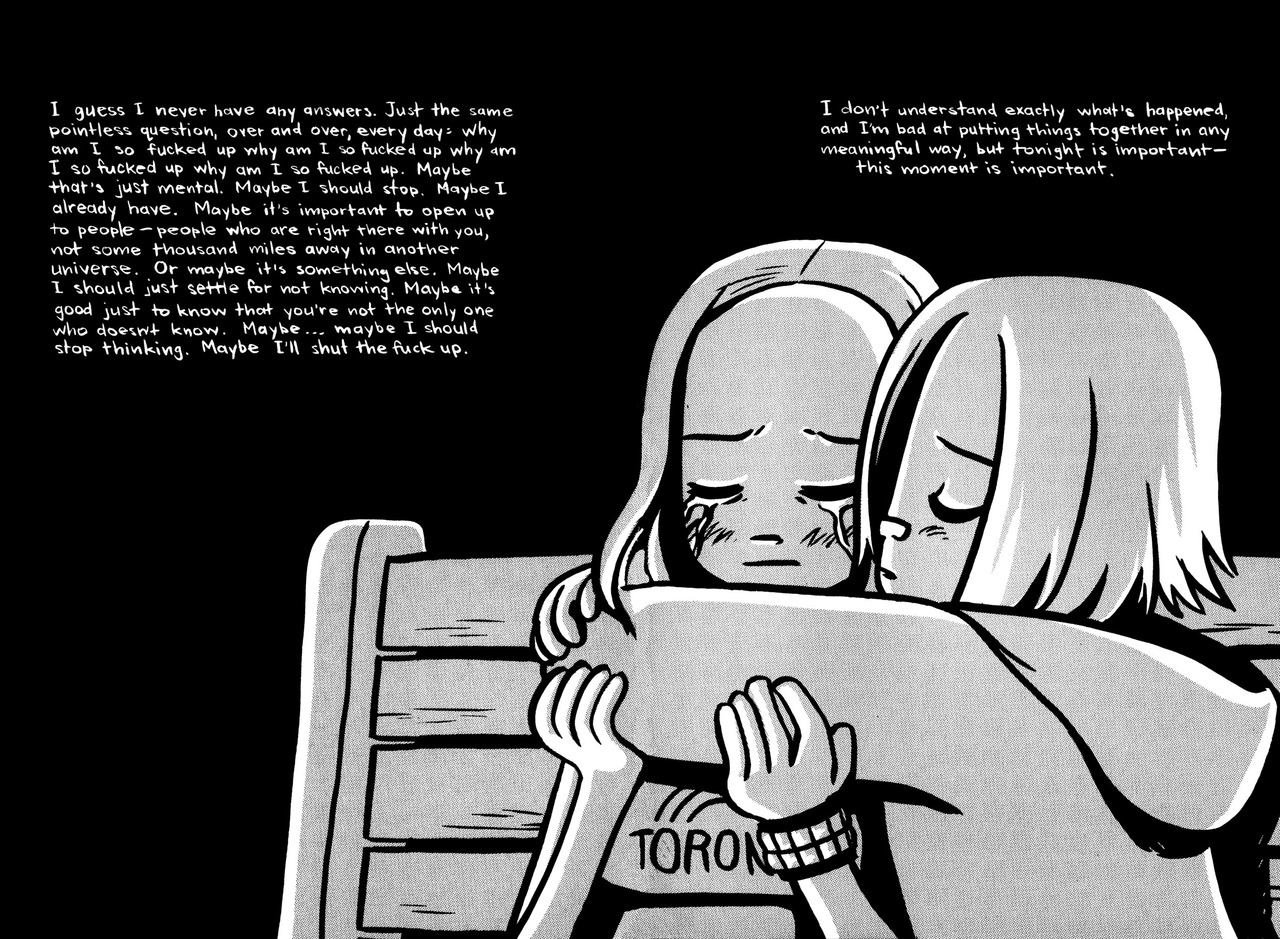
Bryan Lee O’Malley’s coming-of-age lesson in Lost at Sea is that even though a young person’s circumstances might keep them from building the life they want right away, they can still start to make steps toward it if they accept help and learn to see things clearly.
Building A Precious Little Life
Five years older, though not necessarily wiser, Toronto layabout Scott Pilgrim finds himself in a very different situation than Raleigh. Although he’s been an adult for awhile, he’s “between jobs,” (yeah, right) he’s dating a high school girl, (bit creepy, there) he plays bass in a rock band (keep waiting on that record deal, buddy), and he constantly mooches off of his roommate and other friends.
Scott, unlike Raleigh, is free from any outside circumstances that might keep him from finding employment, getting into a relationship that isn’t doomed to fail, and generally building a happy life for himself. But at the beginning of the series, he can’t seem to find the motivation to make any of it happen.
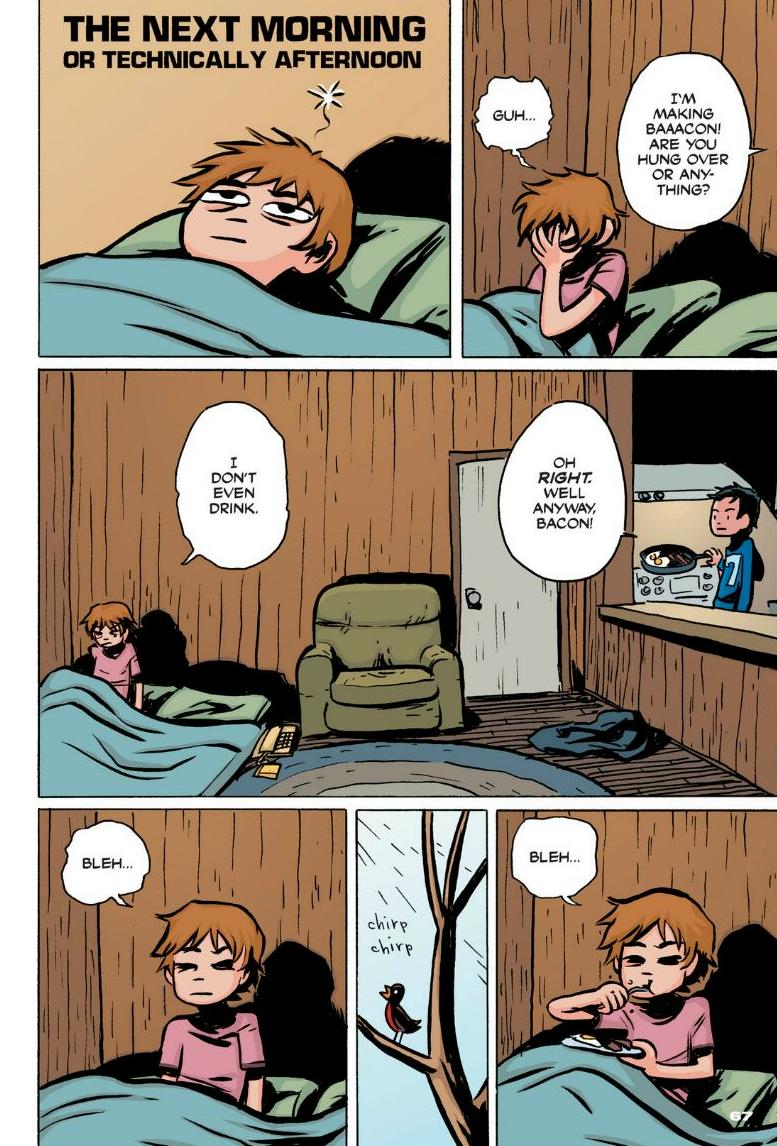
Credit: Bryan Lee O’Malley, Scott Pilgrim’s Precious Little Life, Oni Press, Page 65
Soon, however, Scott happens across the colorful-haired, blasé Ramona Flowers. They start a whirlwind romance, and she inspires him to commit to a mature relationship, move out of his hole in the wall apartment, and even get a job… but it isn’t quite that simple. There are people with a vested interest in Ramona not finding love again. If he wants to date Ramona, Scott must defeat her seven “evil exes” in a series of video game-style boss fights, complete with combo breakers, summon spells, ninja swords, and extra lives.
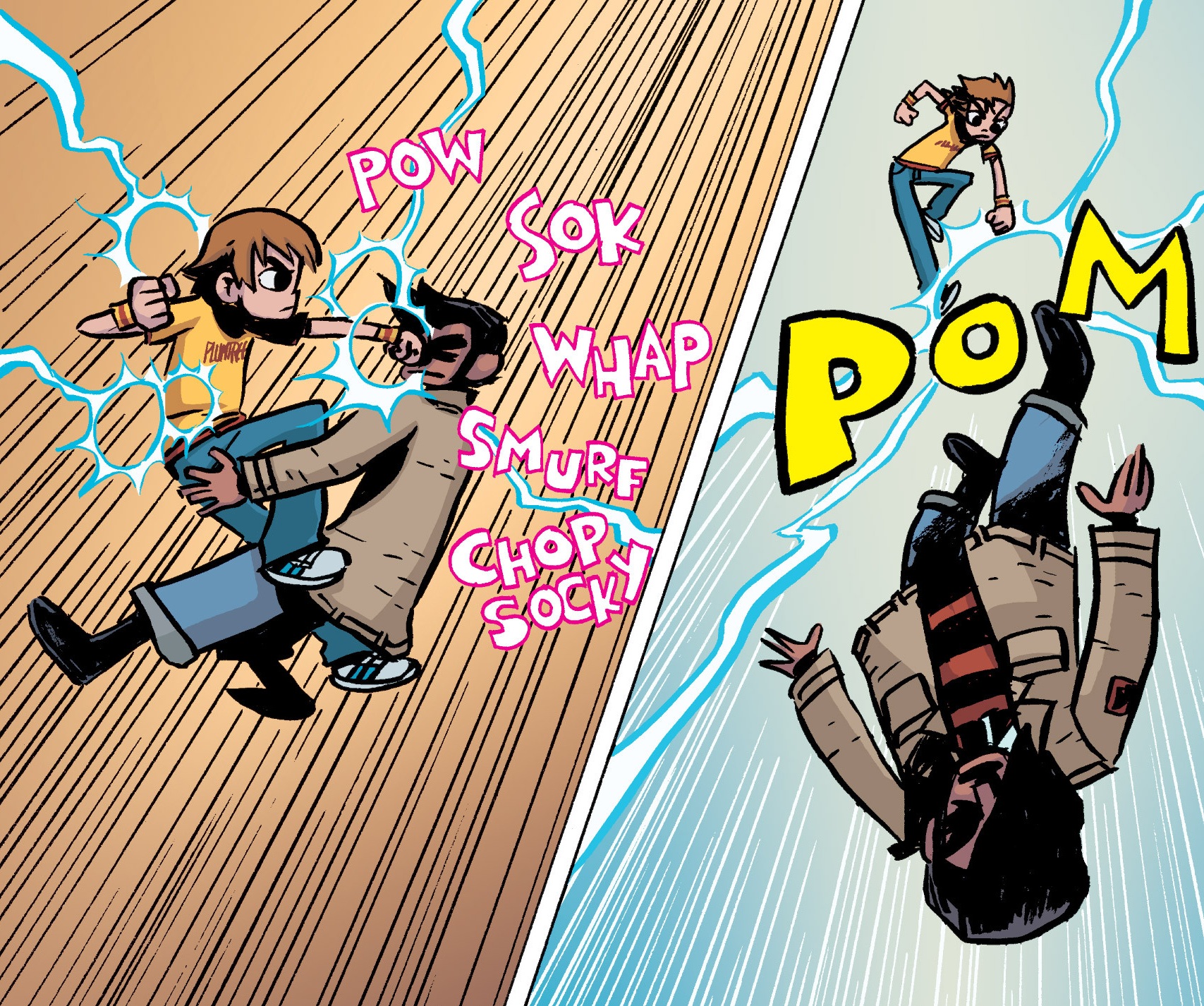
Credit: Bryan Lee O’Malley, Scott Pilgrim’s Precious Little Life, Oni Press, Page 139
The series’ mad-cap action sequences aren’t purely metaphorical, and they aren’t meant to imply that Scott is delusional, like Raleigh in Lost at Sea. However, they also don’t mean that the series belongs to the magical realism genre, where supernatural elements are fully integrated into a realistic setting. Bryan Lee O’Malley has, in fact, deliberately kept the supernatural elements from fully integrating into the normal world.
No one in Scott’s friend group thinks it’s strange that he can punch a guy sixty-four times in midair, or that magical swords emerge spontaneously from his chest. There are also no real consequences for what happens during Scott’s supernatural escapades. His habit of exploding people into coins never results in him being arrested, for example. Scott Pilgrim is famous for its “seamless” transitions into absurd fight scenes, but right after one is over, everyone just goes about their day as if nothing happened.
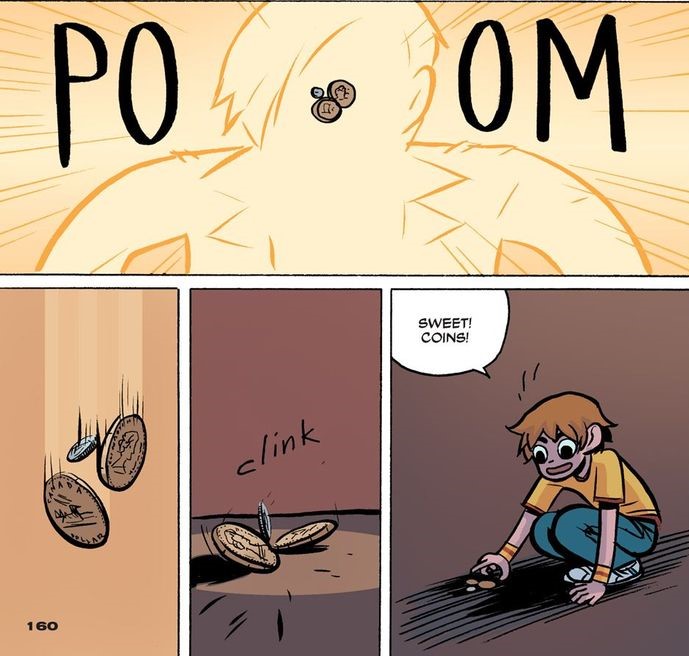
What the fights ultimately represent is that in order to build a relationship with Ramona and mature as a person, Scott needs to learn to be better than the various assholes lurking in Ramona’s past: emotionally fragile posers, superficial jerks, and abusive monsters all the same. And why shouldn’t he learn to be better? His life is stuck in arrested development anyway; he’s got nowhere to go but up!
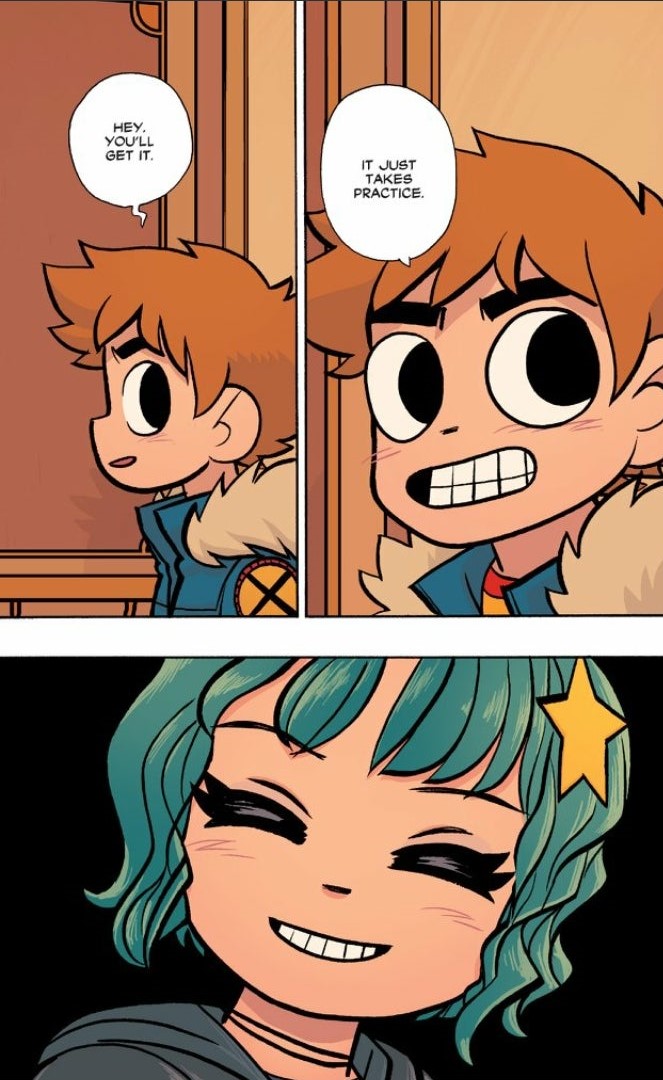
The consequence-free nature of Scott Pilgrim’s “magical” sequences plays beautifully into the series’ coming-of-age lesson. Bryan Lee O’Malley’s advice for twenty-somethings trying to find motivation and take advantage of their opportunities: just go for it, with an ultra-combo’s worth of passion, and don’t get hung up on the consequences when you’ve got nothing to lose.
No Second Chances
Katie, the protagonist of Seconds, takes the lessons of the previous stories to heart. As a young chef, she waited on her opportunity, which came in the form of a couple of entrepreneurs interested in her cooking. They created a restaurant called Seconds, and she threw herself into her work with wild abandon, making the venture a massive success. Along the way, she even ended up with a loving boyfriend, not to mention her own apartment in the restaurant’s attic. For a period of time, she had everything Raleigh or Scott ever wanted: a stable, rewarding life.
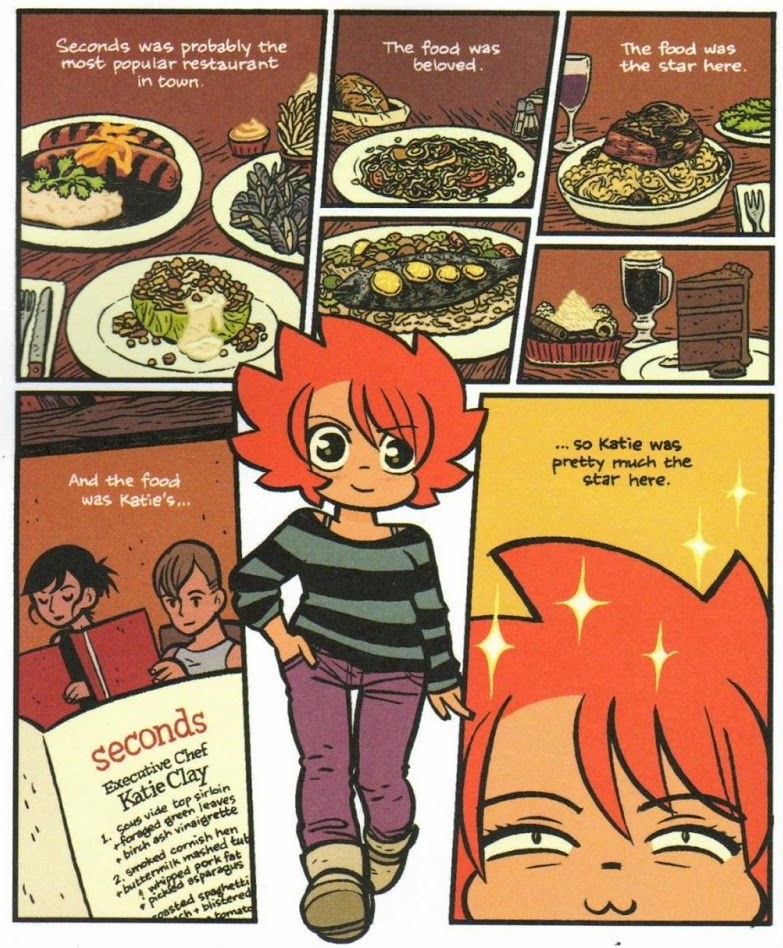
Four years later, however, Katie is twenty-nine, the boyfriend is gone, and the daily grind getting a bit old. Katie is ready to move on from her successful position and start a new restaurant, if only construction would get done on the building. This premise represents a radical departure for Bryan Lee O’Malley, who up until Seconds had written exclusively about characters trying to build a life.
Now he’s writing about the challenges of leaving a stable life behind and the substantial risk that poses for someone with a lot more to lose. Given that Seconds is the follow-up to Bryan Lee O’Malley’s own extremely successful Scott Pilgrim series, it’s not hard to see why he chose to write about these themes. The magic in Seconds also involves more legitimate risk than the kind in the Scott Pilgrim series. While Katie is waiting for construction to finish up on her new restaurant, a mysterious white-haired girl appears in the middle of the night, standing on top of her dresser.
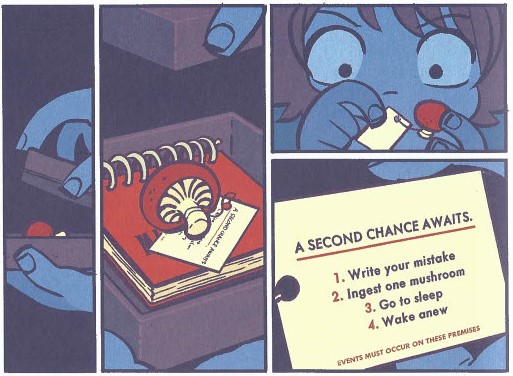
The next day, she finds a small wrapped box in the drawer with a notebook, a mushroom, and an instruction card saying that if she writes down a mistake and eats the mushroom, her mistake will be fixed when she wakes up.
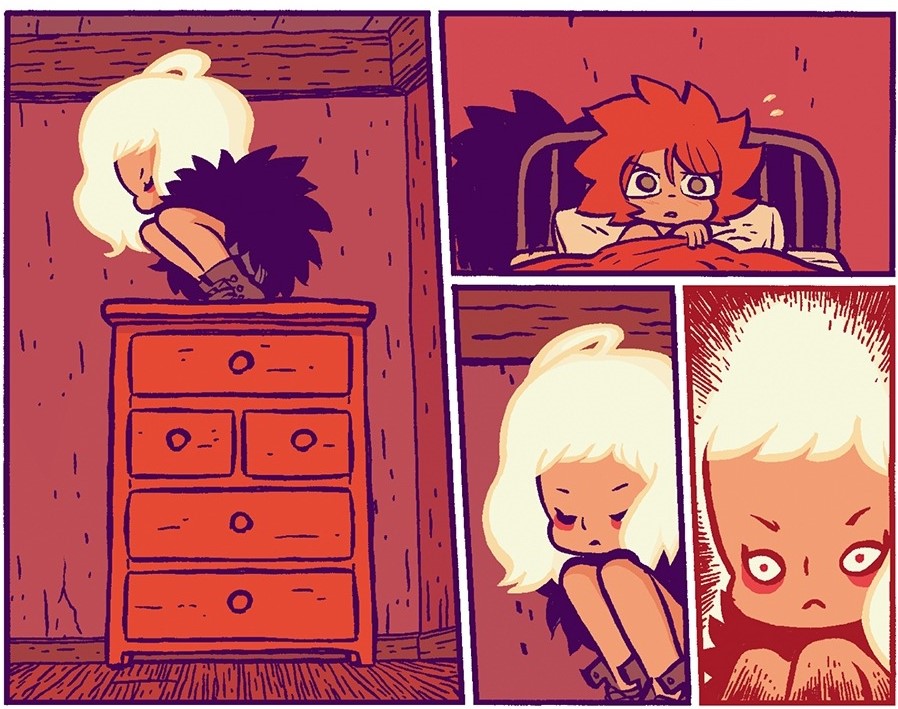
After using the mushroom to fix a small but dramatic kitchen accident and coming to grips with her newfound power, Katie finds more mushrooms and begins to use them to experiment with fixing inconsequential mistakes. This prompts the white-haired girl to appear again. It turns out that she’s a spirit haunting Seconds, and that the mushrooms are a manifestation of her magic. She implores Katie not to use any more mushrooms, but Katie ignores her and quickly begins to make more and more wide-reaching changes to her past.
Second-Guessing
For the first time, Bryan Lee O’Malley has introduced actual magical realism into his stories, as opposed to the delusions in Lost at Sea or the fuzzy unreality of the Scott Pilgrim series. Like many magical realist stories, Seconds takes inspiration from folklore — the idea of a house deity is common in many historical pagan cultures — and doesn’t really explain why the magic works the way it does. But the most important thing is that the magic is fully integrated with the setting, which means that Katie’s adjustments to the past have real consequences.
Katie uses the mushrooms to erase the fight that led to her breakup with her boyfriend, which brings her affectionate relationship back but results in the loss of her long-held independence. When construction on her new restaurant irrevocably stalls, she changes the past so that she chooses a swanky but soulless uptown location rather than the dilapidated but charming building she had her heart set on.

Credit: Bryan Lee O’Malley, Seconds, Ballantine Books, pages 15, 197
Katie isn’t exactly hanging onto the past; she’s desperate to move on with her life. But she refuses to be honest with herself about what she wants her future to be, or to accept the web of choices and mistakes that led to her current situation. Eventually, her magically-assisted second-guessing results in reality itself unraveling, until she finally uses her last mushroom to go back to before she ever tried to revise her past. All of her mistakes are terrifyingly intact, but her supernatural tribulation has given her a new confidence in herself and her desires.

Bryan Lee O’Malley’s lesson in Katie’s story isn’t actually all that different from the one in Scott’s: follow your heart and pursue your desires confidently. But the most beautiful part of reading the two stories together is realizing that the lesson holds whether you’re twenty-three and untouchable or twenty-nine and overwhelmed. Katie’s life situation and access to legitimately reality-bending magic means she needs to be more careful than Scott, but that doesn’t mean she can afford to be any less genuine in her personal growth.
Music Keeps On Sounding Better
In real life, people can’t solve their problems via boss fight, or use magic mushrooms to fix their mistakes. There is an outside chance they’ll become convinced that their soul was stolen by a cat, but they probably won’t find it if they go looking. However, all of these magical elements are Bryan Lee O’Malley’s way of showing what it means to grow up, in the very most real sense, at every stage of the process. When you’re eighteen and don’t yet have the means to get what you want, make the best of it.

When you’re twenty-three and you get those opportunities, go forward with reckless abandon. When you’re twenty-nine and you’ve got tough choices to make, be careful, but try not to second-guess yourself. Each character learns their own lesson and ends their story happier than when they started, but the full scope of Bryan Lee O’Malley’s thesis on growing up doesn’t become clear until every book in his catalog is accounted for.
The truth is that coming of age means different things at different times. Bryan Lee O’Malley has spent his entire career so far exploring that, and the results are worthwhile for anyone, at any step of their own growing up.
